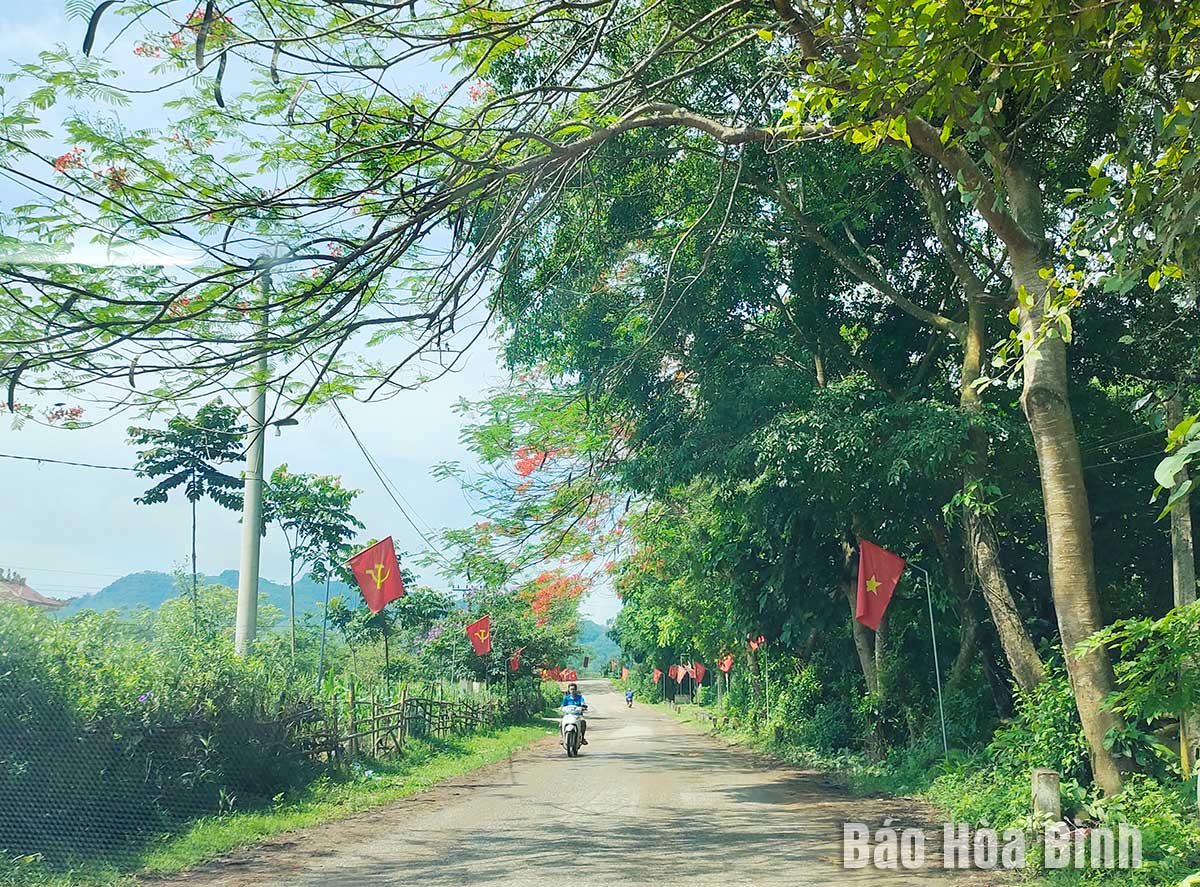
According to the Department of Agriculture and Rural Development, the total resources mobilized to implement the National Target Program on building new rural areas from 2021 to 2025 in the province is expected to be 25,000 billion VND.

The program of building new rural areas has changed the appearance of many rural
areas in the province. The photo was taken in Tu Ly commune (Da Bac).
Accordingly, the directly-supported capital from the central budget to
implementthe program is about 723 billion dongs; the integrated capital
sources from the National Target Programs for the socio-economic development of
the ethnic and mountainous
minorities, the sustainable poverty reduction in the period of 2021-2025 and other projectsbeing implementedin the
rural areas of the province is approximately 1,810 billion dongs; the capital
from the local budget is 854 billion VND; the credit capital (lent by banks for
the development and production) is about 19,600 billion dongs; the enterprise
capital is about 1,000 billion dongs. In addition, the mobilized capital from
the voluntary contribution by the people
and communities is about 1,063 billion dongs.
In the period of 2021-2025, Hoa Binh province has set the target that the rate of the communes meeting the new rural standard reaches over 70%; The rate of the advanced new rural communes reaches 26.4%;
The rate of the model new
rural communes reaches 6.2%; 50% of the district-level
units meet the new rural standard or complete the task of building new rural
areas. Additionally, the
whole province is trying to
have at least one district meeting the standards of the advanced new rural. On average, the
communes in the province
achieve 17.0 criteria per commune; standardizing
80 OCOP products at the provincial level or more.
The Standing Board of the Hoa Binh provincial Party Committee has agreed in principle on a proposal by the Standing Board of the Party Committee of Hoa Binh city to gather feedback on the city’s 1:2000 zoning plan, which forms part of its broader urban development strategy.
Hoa Binh province has made notable progress in public administration reform and digital government development, with the satisfaction index among citizens and businesses reaching over 84%, according to recent government evaluations.
Thanks to great efforts by local authorities in recent times, the governance and public administration performance of Mai Chau district has been significantly improved.
In the afternoon of June 6, the Party Committee, the People's Council, the People's Committee and the Fatherland Front of Lac Son district solemnly held a meeting to celebrate the 139th anniversary of the district's founding (1886–2025) and the 79th anniversary of the establishment of the district's Party Committee (1946–2025). There was the attendance of Mr. Bui Van Thang, the Vice Chairman of the Provincial People's Council; Mr. Quach Tat Liem, the Vice Chairman of the Provincial People's Committee; Ms. Dang Bich Ngoc, the Deputy Head of the National Assembly Delegation of the province; as well as the former leaders of the province and district through various periods, who are the natives of the district.
Implementing the Politburo’s Resolution No. 57-NQ/TW on breakthroughs in science – technology, innovation, and digital transformation is a golden opportunity for the northern mountainous province of Hoa Binh to renew growth model, improve competitive edge and shorten digital gap.
Resolution 57-NQ/TW, issued by the Politburo on December 22, 2024, identifies sci-tech, innovation, and digital transformation as strategic breakthroughs to build a developed and prosperous nation. In Hoa Binh province, this spirit is not just a slogan, it’s being put into action through concrete initiatives that form a "new development triangle”: digital citizenship, digital economy, and digital administration.



